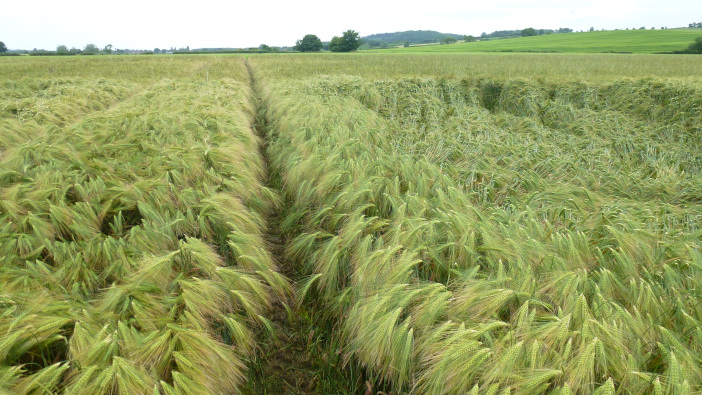While the dry weather in the summer and autumn of 2022, delayed drilling in some areas, many crops were established early into relatively dry seedbeds. Now, high levels of rainfall throughout January have left many of these in standing water.
“These conditions set the scene for a high risk of lodging this coming spring,” said Ruth Stanley, Life Scientific UK and IE country manager
“Early drilling increases stem lodging risk as straw strength is compromised, whilst an additional consequence of the dry weather is that many crops have been left with poorly developed root systems increasing the risk from root lodging.
“If it dries up again in the spring as it has done in the last several years, a poorly rooted plant won’t yield, particularly on lighter land types.”

Two forms of lodging can take place, each causing combining and drying difficulties, reduction in yields and quality issues. Stem lodging occurs when the stem breaks as it is not strong enough to support the plant, while root lodging occurs when the rooting system is not able to anchor the crop in the ground.
“Lodging risk increases with factors such as early drilling and a high plant population. However the risk from root lodging increases where there is an insufficiently developed root system in soils that are rich, fertile and well cultivated, particularly those with high organic matter or low clay content- and there are many crops across the UK that are in this situation,” Mrs Stanley said.
“Varieties also have different resistances to lodging, this comes down to differences in height, tillering capacity, stem strength and speed of establishment. Varieties with a score of 7 or less on the AHDB Recommended List should be considered at risk of lodging and need to be managed carefully.”
According to Mrs Stanley, a robust PGR programme will help protect against both forms of lodging. She suggests that trinexapac can play a key role, being less temperature dependent than chlormequat.
“Trinestar contains 250g/l trinexapac ethyl and is a PGR registered for use on all varieties of winter and spring wheat, barley, oats, rye, triticale and ryegrass seed crops.
“Trinestar can be applied between growth stages 30 – 39 in winter cereals and its use early (GS 30), can help root development and root plate diameter, which could be critical this year,” she added.
“It works by directly affecting giberellin biosynthesis in cereals, which can result in stronger stems, shorter internodes and, importantly for this year, its use can lead to an increase in root growth.”



